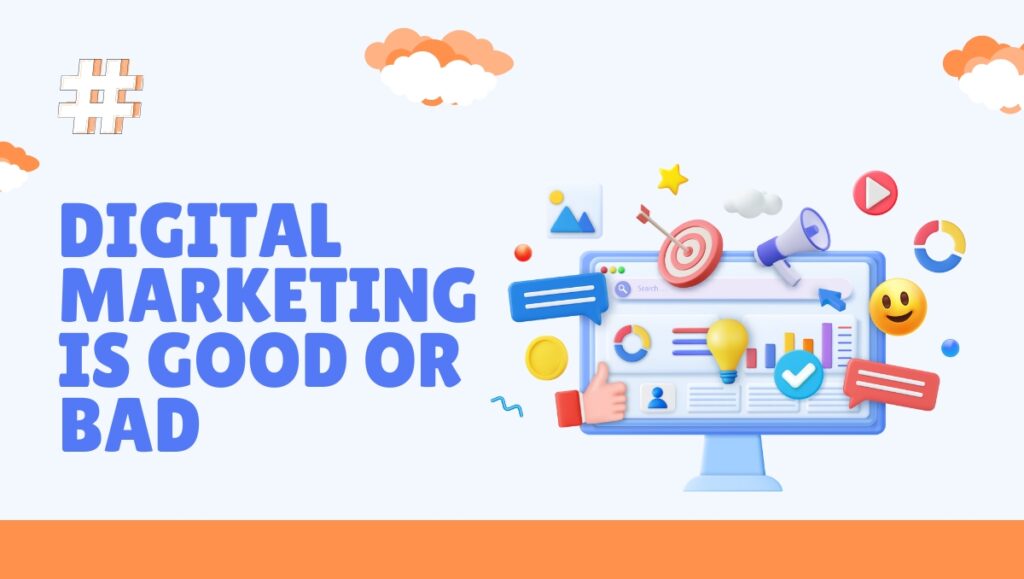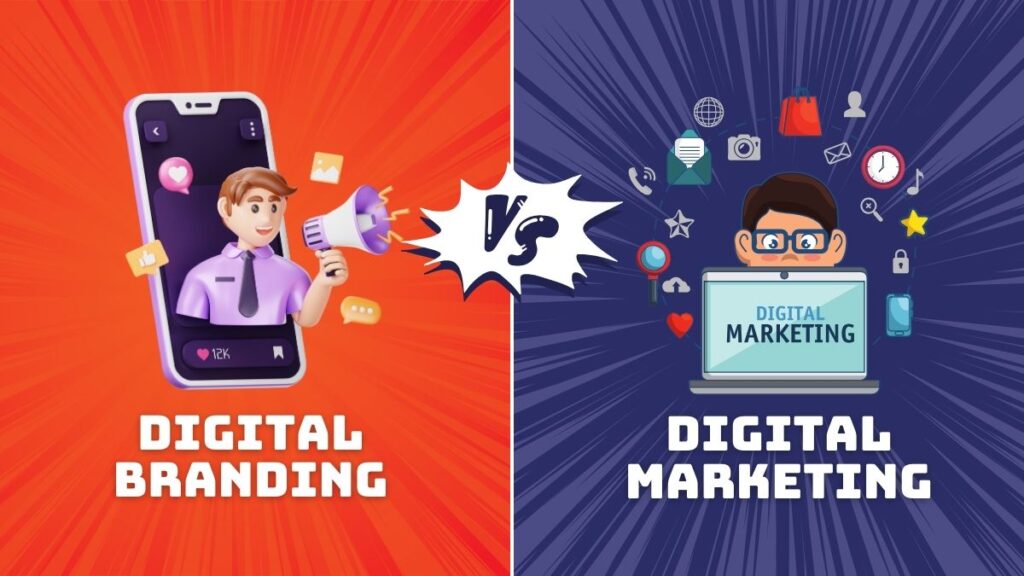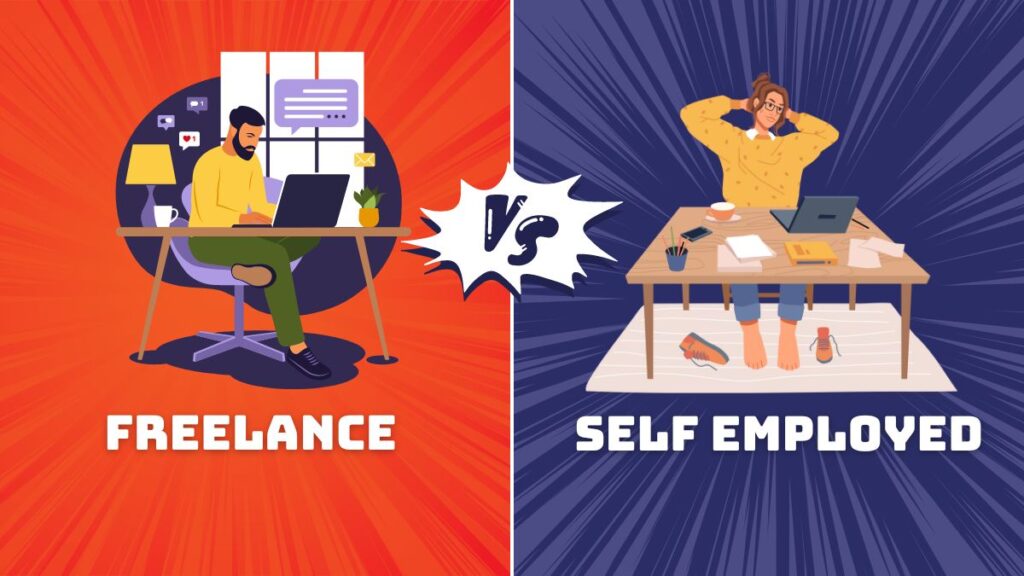Imagine standing at the edge of a big forest with a sharp tool in your hand. You could clear a new path and find something great, or you could slip and hurt yourself. That is a lot like digital marketing.
It has huge potential, but it also comes with risks. People often ask if digital marketing is good or bad. The truth is, it depends on how you use it. Like any tool, it takes practice, good judgment, and a clear sense of direction.
Why This Debate Matters Now?
Digital marketing is changing fast. What worked a year ago might not work today. With rising costs, shifting algorithms, and growing user skepticism, it is more important than ever to understand what actually drives results and what just adds noise.
Sky-High Spend vs. Ad Fatigue
In 2023, global digital ad spend topped $680 billion and is on track to hit $1.5 trillion by 2030 as marketers chase ever-higher ROI. Yet 42 percent of users now block ads altogether, and another 30 percent simply ignore them through “banner blindness.”
Zero- and First-Party Data
As cookies crumble, businesses that lean into genuinely permission-based data collection, such as surveys, quizzes, and loyalty programs, are seeing cost per acquisition drop by up to 25 percent. They are also building lasting customer trust.
Micro-Moments & Mobile
Over half of all “I want to buy” searches happen on mobile, and 69 percent of those result in action within an hour. Brands that embed themselves into these micro-moments through local inventory ads, click-to-call, or chatbots tend to win disproportionately.
Digital marketing is not a weapon of mass persuasion or a privacy minefield by default. Its value and its dangers depend on how thoughtfully you use it, whether you track the right metrics, respect your audience’s time, and align tactics with genuine customer needs.
Defining Digital Marketing
Digital marketing is more than just ads or social media posts. It is the full range of strategies and tools that help businesses connect with people online, build trust, and drive action.
Core Channels & Tactics
SEO
Beyond keywords, modern SEO means structuring content around user intent by answering the questions people actually ask at each stage of the journey. Brands that built topic clusters saw organic sessions grow by 50 percent in six months.
PPC
Multi-touch attribution is transforming PPC. Rather than credit the last click, savvy teams assign weighted value across search, display, and social interactions. In many cases, they uncover that early-stage awareness ads actually drove 30 percent of what appear to be last-click conversions.
Email Marketing
Today’s emails are automated journeys, not blast lists. Welcome series alone can generate up to 320 percent more revenue than standard campaigns, and behavioral triggers (abandoned carts, browse reminders) lift average order value by 20 percent.
Social Media
Organic reach is tougher, but interactive formats such as polls, shoppable tags, and live Q&A can boost engagement rates by up to 8 times compared to static posts.
Content Marketing
Long-form guides and data-driven reports build authority (and backlinks) more reliably than short listicles. Companies that publish one original study per quarter see 3× more media mentions.
Affiliate & Influencer Partnerships
Look beyond follower counts. Micro-influencers (10k–50k followers) often deliver 10–15 percent higher engagement and more credible word-of-mouth in niche markets.
Contrast with Traditional Marketing
Traditional ads are like billboards: static, one-way, and impossible to personalize. Digital is more like GPS, constantly recalibrating based on real-time data and guiding each prospect turn by turn.
Ecosystem Overview
Owned: Your website, blog, and email list are channels where you collect first-party data that you fully control.
Earned: Mentions, shares, and reviews serve as social proof that validates your brand.
Paid: Ads and sponsored posts are forms of strategic amplification, most effective when they connect with your owned and earned channels.
Digital Marketing is Good or Bad
Like any tool, digital marketing can be used well or poorly. It has the power to inform, connect, and grow a business, but it can also overwhelm, mislead, or turn people away when done without care.
The Case for Digital Marketing (The “Good”)
When done right, digital marketing helps businesses reach the right people at the right time. It can build real relationships, grow brand awareness, and deliver measurable results without the guesswork of traditional methods.
Precision & Measurability
Hyper-Targeting: Lookalike audiences on Facebook can find new buyers who share the top 1 percent of traits with your best customers.
Real-Time Insights: Dashboards let you spot a 10 percent drop in conversion rate within hours, so you can A/B test a new headline before budgets drain.
Attribution Clarity: Blended models (first touch, last touch, linear, time decay) help you allocate spend where it truly moves the needle.
Cost-Effectiveness & Scalability
Start Small, Grow Big: You can validate a new offer for $50–$100, scale to thousands once you hit target CPA, and pause in an instant if performance dips.
ROI Focus: Since digital lets you tie spend directly to revenue, average ROAS (return on ad spend) across channels often exceeds 400 percent for well-optimized campaigns.
Speed & Agility
24–48-Hour Cycles: From creative brief to live test in two days; insights feed back into creative, so your campaigns evolve like living organisms.
Crisis Response: During supply-chain hiccups or PR issues, you can flood search and social with corrective messaging in hours, not weeks.
Global Reach & Localization
Dynamic Creative Optimization: Ads swap out images, headlines, or CTAs on the fly based on viewer location, device, or weather, lifting engagement by up to 30 percent.
Creativity Unleashed
Interactive Storytelling: Gamified quizzes, shoppable videos, and AR try-ons are formats that deepen emotional ties and collect zero-party data for follow-up.
Consumer Empowerment
Reviews & UGC: Highlighting unfiltered customer stories on-site can raise conversion rates by 14 percent, while also reducing return rates.
The Case Against Digital Marketing (The “Bad”)
Not all digital marketing works as promised. It can be noisy, intrusive, and expensive, especially when campaigns are rushed, poorly targeted, or focused only on short-term gains.
Ad Fatigue & Blindness
Complexity Creep: Running dozens of ad sets and landing pages can create analysis paralysis, causing small teams to waste hours deciphering dashboards instead of focusing on strategy.
Blockers & Browsers: With Safari’s Intelligent Tracking Prevention and 42 percent ad-block adoption, certain segments become fully invisible without first-party strategies.
Privacy & Trust Issues
Regulatory Risks: GDPR fines average €20 million for data breaches; even minor slip-ups in consent can trigger bulk deletions and rebuild campaigns from scratch.
Trust Premium: Studies show 64 percent of consumers will pay more or recommend a brand that respects their data and provides transparency.
Rising Costs & Competition
Keyword Inflation: In finance and legal, CPCs can exceed $80. Smaller brands must pivot to long-tail, question-based queries, which often have 60 percent lower CPCs and comparable intent.
Rapid Change & Skill Gaps
Learning Curve: Cloud-based marketing suites update monthly; certifications can lag behind platform features by six to eight weeks.
Dependence on Third-Party Platforms
Algorithm Whiplash: One newsworthy policy change (like Meta’s recent API shift) can slash organic reach overnight. Brands with multi-channel owned assets (email, SMS, community forums) sleep easier.
Real-World Examples & Case Studies
It’s one thing to talk about strategies, it’s another to see them in action. Real-world examples show what actually works, what does not, and how different businesses use digital marketing to grow, connect with customers, or bounce back from mistakes.
Successes
Glossier: Grew from blog to beauty powerhouse by treating every customer review as R&D input and integrating feedback into product roadmaps in real time.
Local Bakery: Spent $100 on geo-fenced Instagram ads, then tracked foot-traffic lifts with UTM-enabled surveys, proving a 60 percent rise in new customers.
Cautionary Tales
Fyre Festival: Influencers drove hype, but lack of operational alignment turned clicks into chaos.
Cultural Misstep: A global brand’s ad flopped because regional slang wasn’t vetted, reminding us that creativity must be anchored in cultural empathy.
When Digital Marketing Works Best
Digital marketing is not a one-size-fits-all solution. It shines brightest in specific scenarios where speed, targeting, and adaptability give brands a clear edge. These are the moments where the right strategy can deliver outsized returns.
Startups and SMEs
Cost-per-lead models let small teams iterate quickly without burning through budgets. With limited resources, performance marketing allows early-stage companies to test, learn, and scale fast.
Niche Products
Micro-audiences respond best to highly tailored messaging. Whether it is a hobbyist tool, a specialty health product, or a B2B service, digital platforms make it easier to reach the exact people who care.
Crisis Communications
Real-time social listening steers tone and timing. In moments of reputational risk or public concern, digital channels allow brands to monitor sentiment and respond swiftly with transparency and care.
Product Launches
Launch campaigns thrive on digital buzz. Influencer partnerships, teaser ads, and early-access email drops can build anticipation and drive conversions without relying on traditional media.
Seasonal Campaigns
Timing is everything. Holiday sales, back-to-school promotions, and cultural moments benefit from hyper-targeted ads and rapid A/B testing that digital platforms excel at.
Local and Hyperlocal Marketing
Geo-targeted ads help local businesses compete with larger brands. From restaurants to service providers, digital lets you reach nearby customers with offers that matter.
Content-Led Brands
When storytelling is central, digital provides the perfect canvas. Blogs, podcasts, video, and social content can educate, entertain, and convert, especially when SEO and distribution are dialed in.
When It Falls Short
Digital marketing is powerful, but it is not perfect. There are times when it falls short, especially if the strategy is not matched to the situation. Here are a few cases where it can struggle to deliver real results.
Complex B2B sales
Big, relationship-based deals often need more than just automated emails or ads. If you skip the personal touch, you may lose trust or fail to move the deal forward.
Brands without a clear voice
If your ads sound like everyone else’s, people tune out. Digital platforms reward authenticity, and generic content often just wastes your budget.
Relying too much on paid ads
Paid campaigns can bring in quick traffic, but if you don’t have strong content or email follow-up, you are just renting attention. You need organic and owned channels to build lasting relationships.
Ignoring customer experience
If your site is slow, confusing, or full of pop-ups, even the best ad campaign will not help. People leave fast if the experience feels frustrating or untrustworthy.
Chasing trends without strategy
Jumping on every new platform or tactic without a clear goal usually spreads your efforts too thin. It is easy to waste time and money without real results.
Short-term thinking
Digital marketing works best over time. If you expect overnight success or pull the plug too soon, you might miss out on long-term growth.
How to Decide If It’s Right for You?
Digital marketing is not for everyone, and that is okay. What matters is knowing what you need, what you can handle, and what makes sense for your business right now.
Audit Your Goals & Resources
Short-term ROI or long-term equity? Budget per lead? Team bandwidth?
Choose the Right Model
In-house gives control but demands talent; agencies bring expertise but need clear briefs; DIY tools are cheap but limited.
Quick Audit Checklist
Do you own your first-party data?
Are your messages consistent across channels?
Are you tracking true business outcomes (LTV, retention), not just clicks?
Best Practices: Maximizing the Good, Minimizing the Bad
To get the most out of digital marketing, you need a balanced, thoughtful approach. These practices help you stay flexible, protect your brand, and build something that lasts.
Use more than one channel
Do not rely on just ads or just social media. Mix it up with search, email, content, and social so that one change in an algorithm does not knock everything off track.
Put privacy first
Make it easy for people to say yes or no. Use clear consent, focus on opt-ins, and collect your own data whenever possible.
Keep learning
Set aside a small part of your budget, around 5 percent, for testing new tools, trying new ideas, or helping your team learn new skills. The space is always changing, and staying curious helps you keep up.
Build your own assets
Your blog, email list, and customer community are things you own. They are your safety net and your loudspeaker. Invest in them.
Stick to ethical practices
Be clear about what you are offering. Respect how often you reach out. Do not use tricks to get clicks. Trust is easy to lose and hard to earn back.
Future Outlook
Digital marketing keeps moving, and it is not slowing down. New tools and habits are changing how people search, shop, and make decisions. Here are a few things that are starting to shape the future.
AI-powered personalization
AI is making things faster and more useful. From smarter landing pages to helpful chatbots, it helps you show people what matters to them at the right moment.
Voice and visual search
More people are asking questions out loud or using images to find what they need. That means you will need to think beyond just written keywords and make sure your content is easy to find in different ways.
AR, VR, and immersive shopping
Trying things on virtually or walking through a 3D store from your phone is becoming more normal. These tools are making online shopping feel more like real life.
Digital marketing is a river that keeps flowing. Some days are calm, others are full of twists and turns. The best thing you can do is stay open, keep learning, and keep moving with it.
Why Adaptability Wins
Digital marketing changes all the time. New platforms come and go, algorithms shift, and what worked last year might not work today. The brands that do well are the ones that stay flexible. They have a clear strategy, but they are not afraid to adjust when things change.
They also remember something important. Behind every click, view, or data point is a real person. The brands that keep that in mind build stronger, more lasting connections.
Conclusion
Digital marketing isn’t inherently good or bad. It’s a mirror of your intent, your strategy, and your respect for the people you’re trying to reach. Wield it wisely, ethically, and relentlessly through a customer-centric lens, and it becomes a transformative force rather than a blunt instrument.
What to Do Next?
Audit your current approach, invest in ethical data practices, upskill your team, and commit to meaningful customer experiences instead of just chasing clicks.
Additional Resources
Books: This Is Marketing (Seth Godin); Digital Marketing for Dummies (Ryan Deiss)
Courses: Google Digital Marketing & e-Commerce Certificate; HubSpot Academy
Blogs & Tools: Moz Blog; Neil Patel; Privacy Compliance Templates


